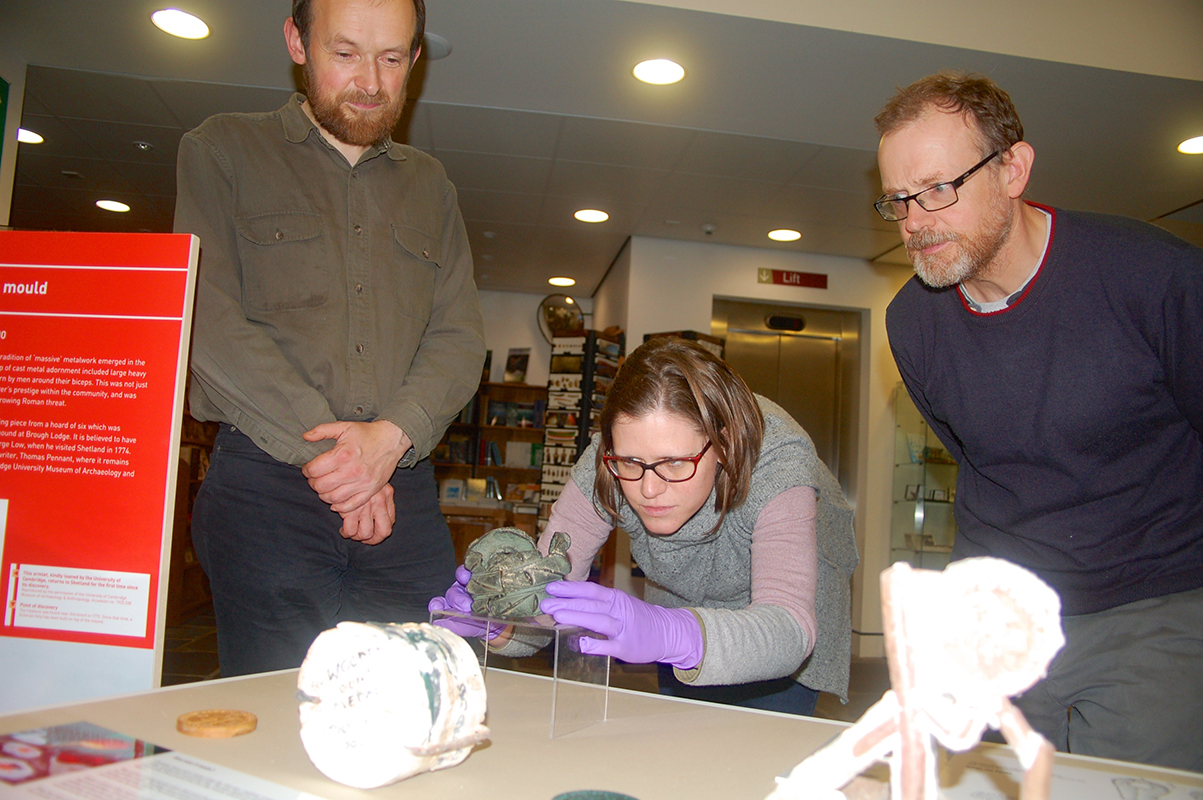Rare jewellery piece comes back to Shetland

University of Cambridge, lowers the Fetlar armlet into place. Looking on is museum curator Ian Tait (left) and exhibitions officer John Hunter who will be running casting workshops for the duration of the exhibition.
A rare Fetlar bronze armlet is returning to Shetland after 240 years.
The historic piece of jewellery will be on show in the Shetland museum for an exhibition that runs from Sunday.
In 1772 some of Shetland’s most unusual treasures, a hoard of six bronze armlets was uncovered near the location where Brough Lodge now stands.
The armlets were seen by Rev George Low, when he visited Shetland in 1774, who said that: “six pieces of curiously cast brass were found wrapped in a raw hide, and sunk a good way below the surface. The figure of these is very singular and the workmanship fine, the relieve bold.”

During the later Iron Age, around 1,700 years ago, a tradition of ‘masive’ metalwork emerged in North Scotland. This kind of heavy armlet, with enamelled settings, was worn around the lower bicep as a show of strength and of the wearer’s prestige.
The Brough armlet was made in one piece but something went wrong in the casting, so it was cut in half and hinges riveted on.
It is the only surviving armlet of the six that were found.
It was passed to the Welsh writer Thomas Pennant, and it remains in his collection, now held by Cambridge University Museum of Archaeology and Anthropology.
It has allowed Shetland museum to display the armlet.
Curator of the Shetland Musuem, Ian Tait, said armlets as a whole were rare and there not many of them to be found in Northern Britain.
As part of the exhibition there will be a display about the science of bronze casting and a lecture will be given in the museum on 4th December about the history of armlet jewellery.
The exhibition runs until the 25th January.





Peg Young
What a great story! Now, if Scotland were an independent country, the piece and the St. Ninian’s Isle treasure might stay in Shetland where they belong…..